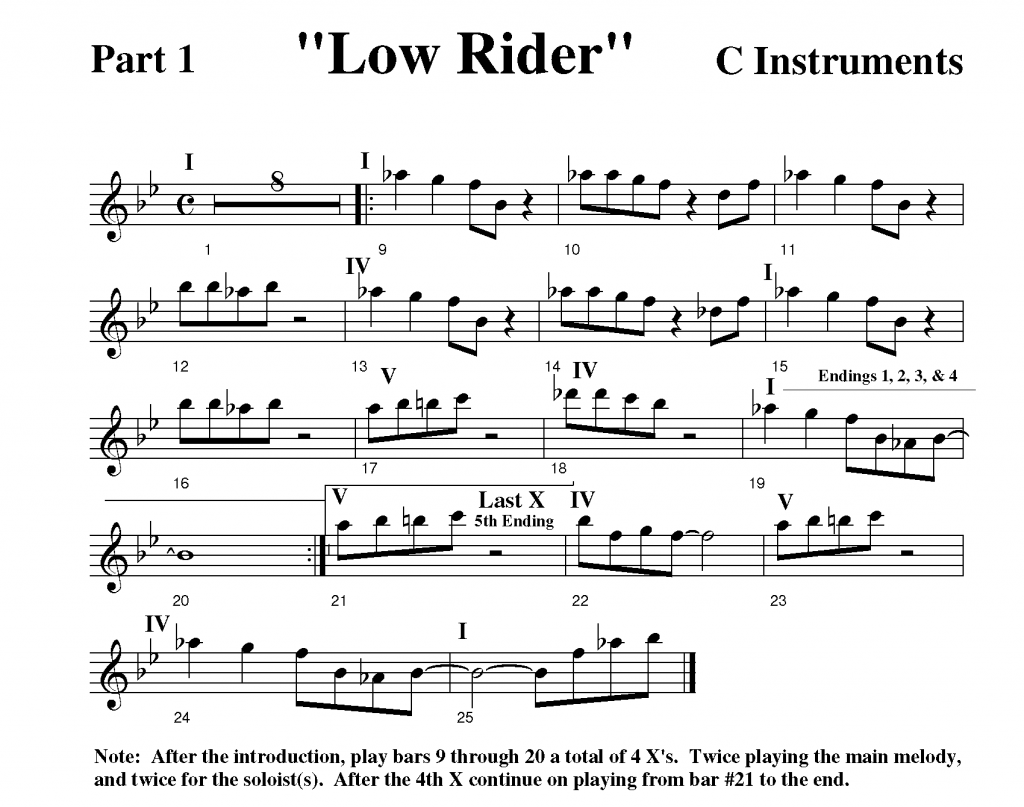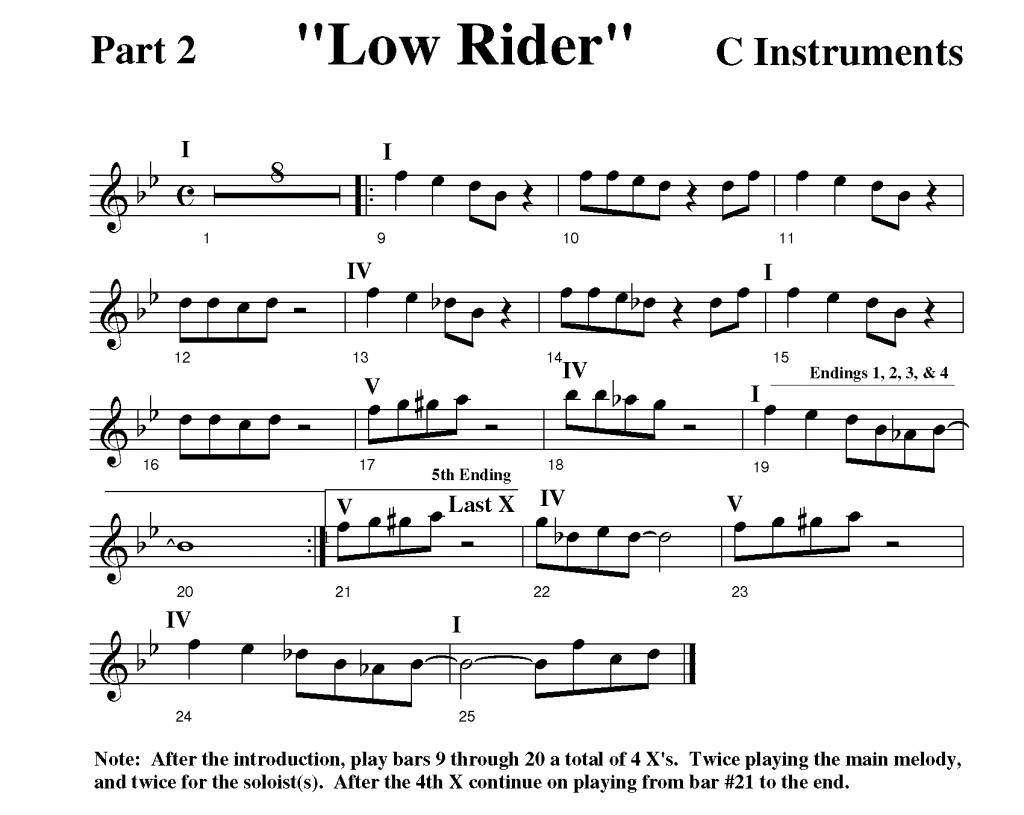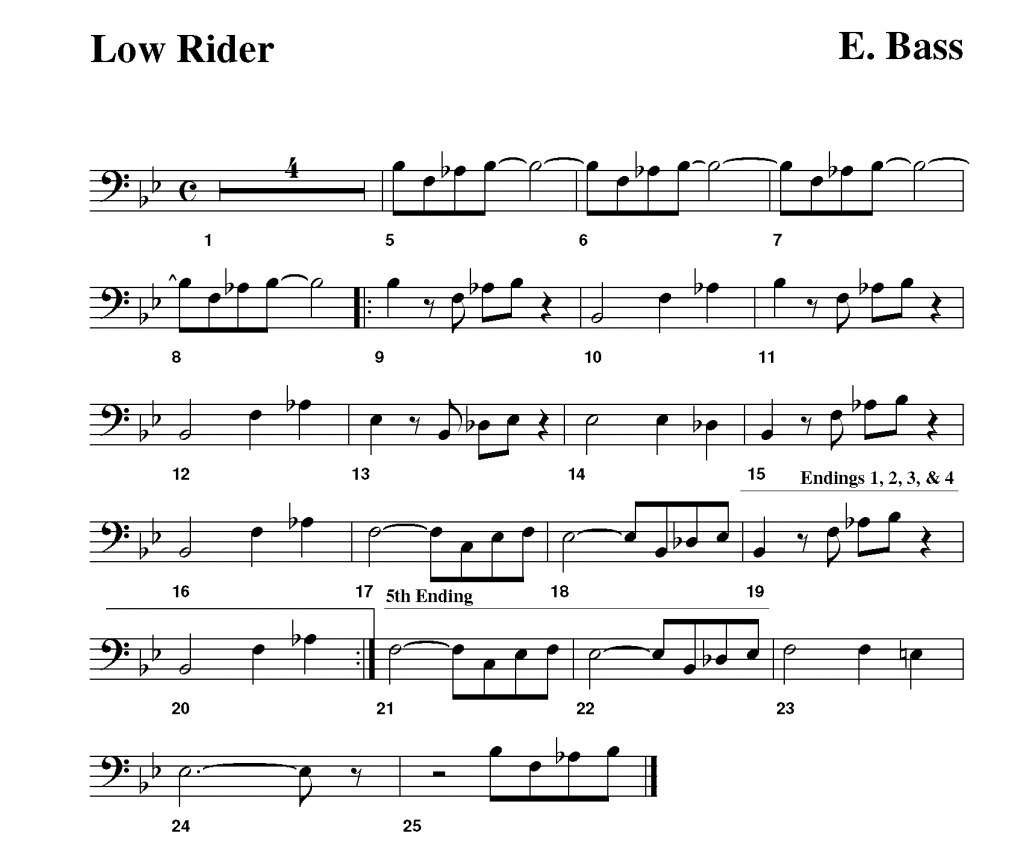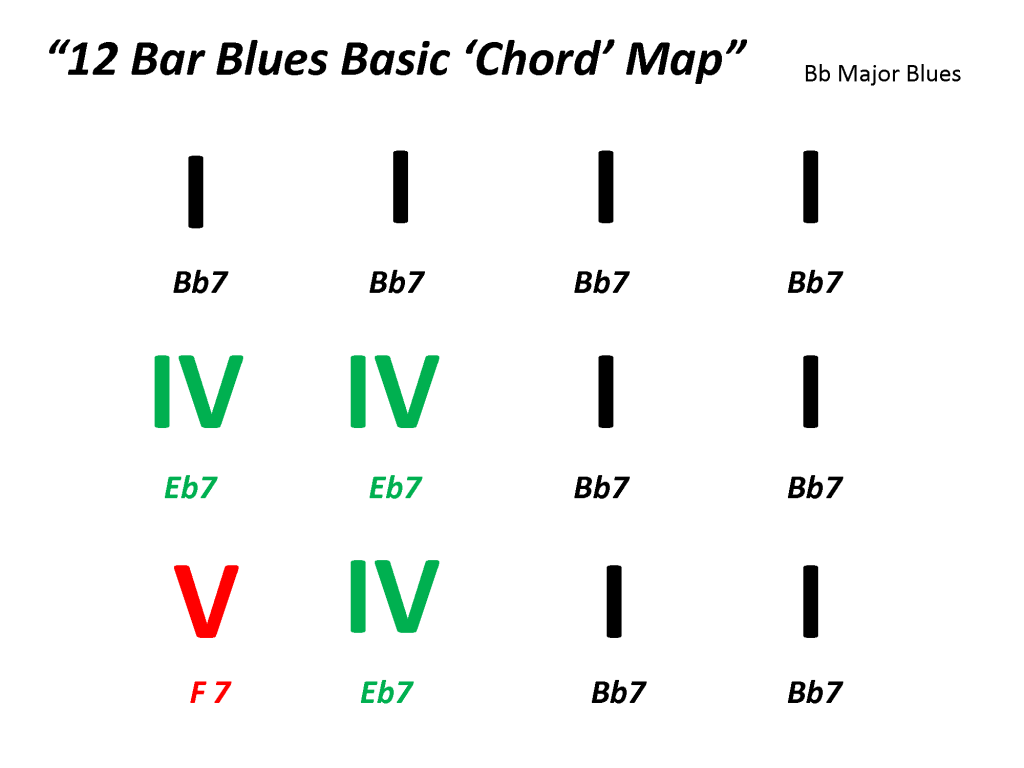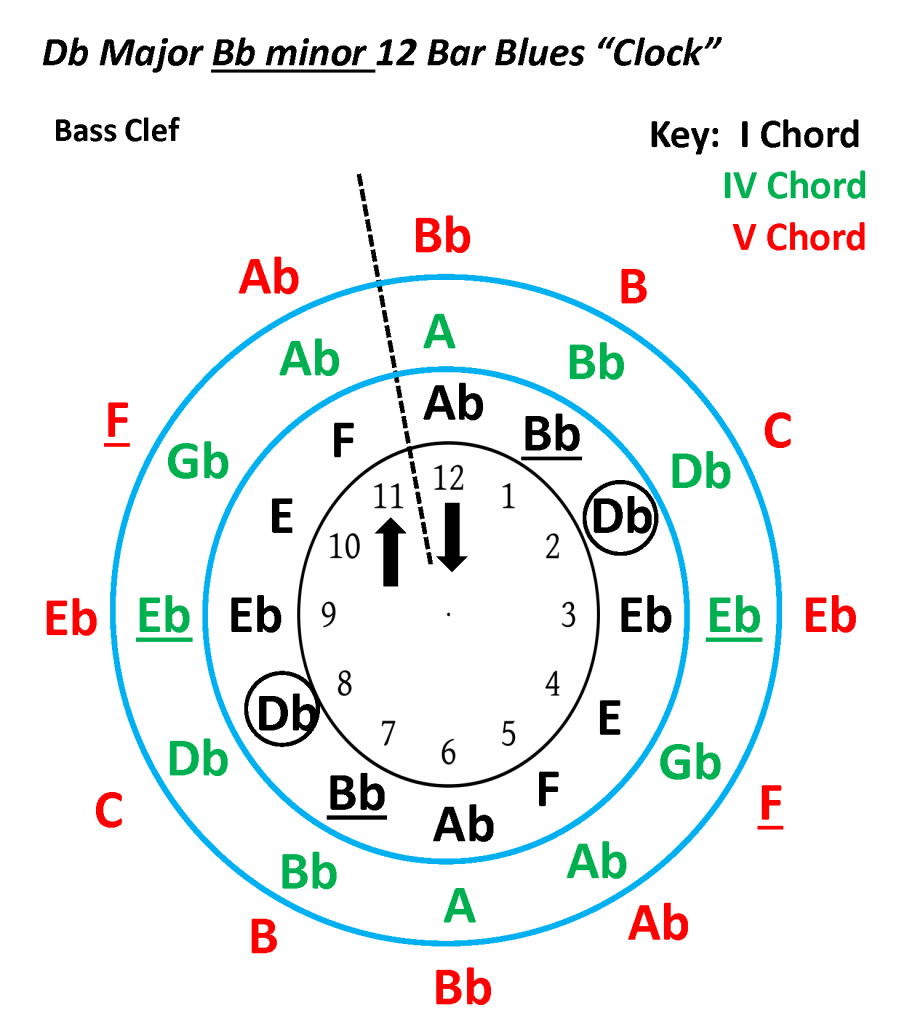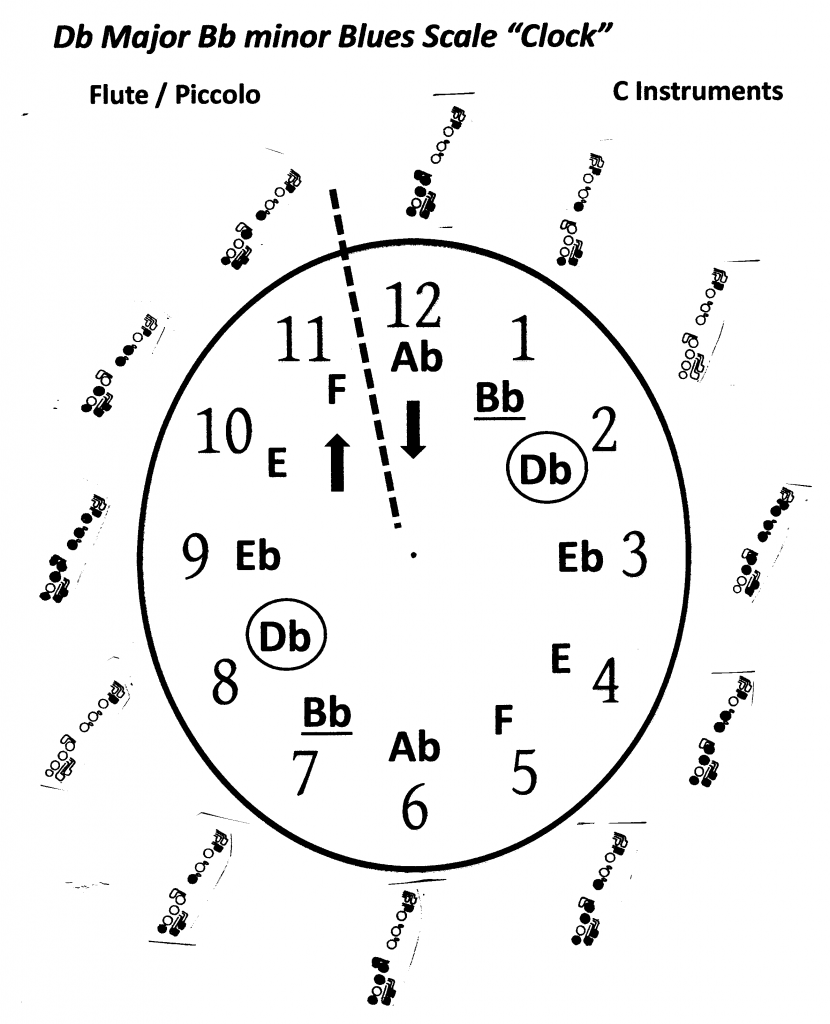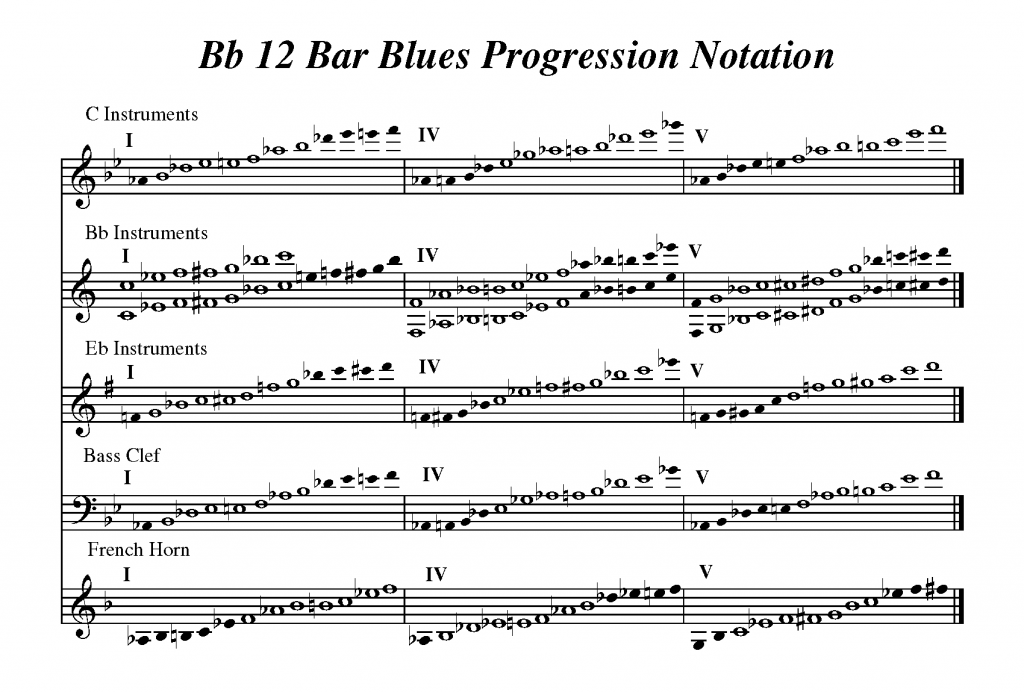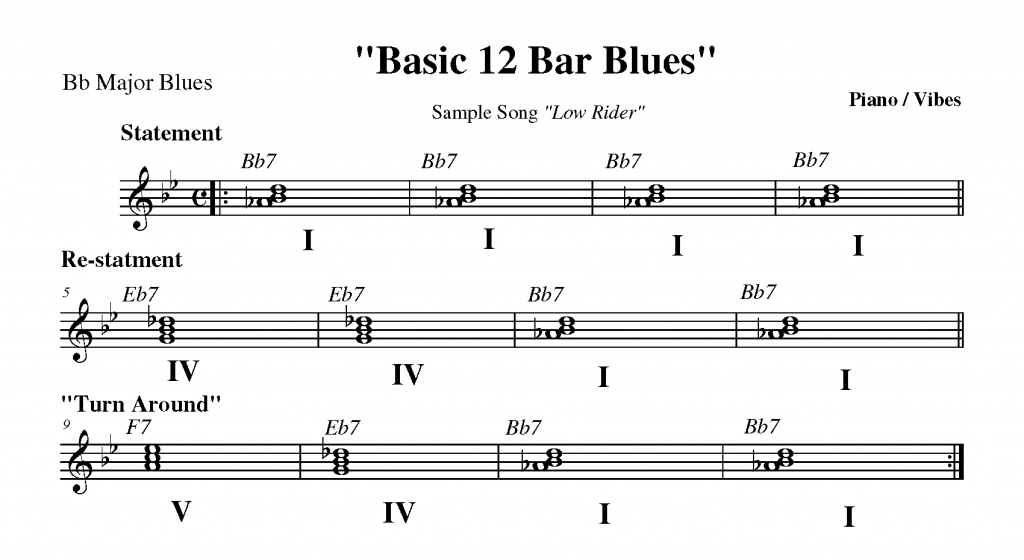Project Title: “Low Rider” – Bb minor blues scale improvisation
Instructions: Prior to this assignment, look over the color coded “12 Bar Blues ‘Chord’ Map”. By now you should know of the three basic blues scales of the I, IV, and V chords. This chart shows you the sequence each chord is played in a standard “12 bar blues” format. The colors on this “code map” are the same color codes used in the “Three Ring Blues Clock”. In this project, each chord indicated on the chart is played for four counts. There is also the “Basic 12 Bar Blues” sheet for piano and vibes, which gives those students “three note chords” which are played in that same order.
“Low Rider” is a two part combo, complete with parts for the rhythm section. There is also a simplified electric tuba (or bass) part you can “opt.” to use. When improvising, you may continue to use the “Blues Clock” maps, or the “Bb 12 Bar Blues Progression Notation” sheet, which is transposed for the four different instrument keys used in today’s concert and jazz bands. Use which ever aide you feel most comfortable with when you are improvising. You also have the option of improvising the solo section, strictly using the “I” chord, or on the Bb minor blues scale. For those that are ready, you should begin working on changing the chords using the I, IV, & V chords when each is appropriate. Remember! do not forget the all important “NO SKIPPING” rule.
The song itself, begins with an 8 bar introduction. The first 16 counts are played with just piano and drums, then followed with 16 counts of added electric bass. The main melody (the “duet” part) begins at bar #9, and is repeated, so it is played initially a total of two times. Bars 9 through 20 are played two additional times, this time featuring one or two improvisation soloists. After the solo “vamps” are finished, go back to measure 9 one last time and once you finish bar 18, skip bars 19 & 20, and then play bar 21 through to the end of the song.
Click below for all band parts:
“Low Rider” Resource Audio File:
